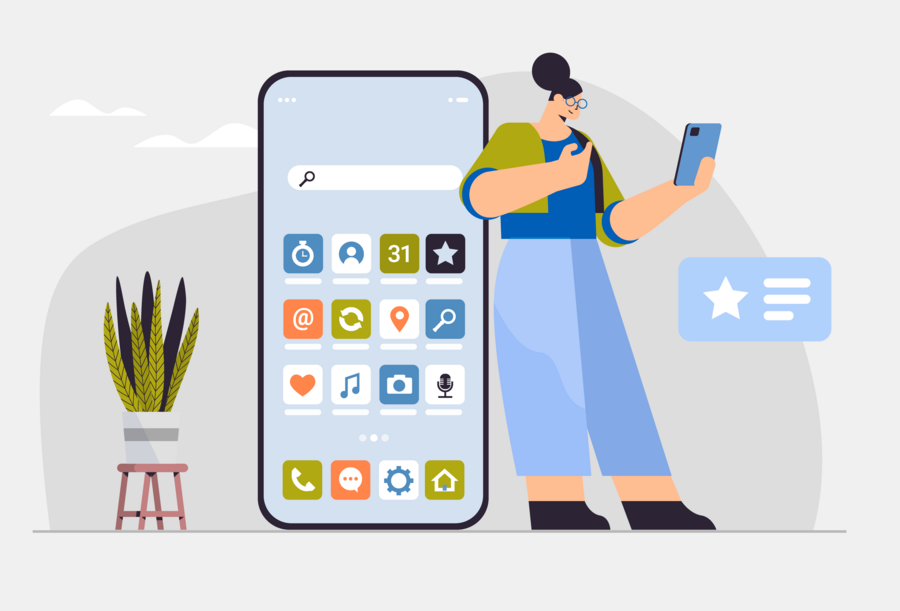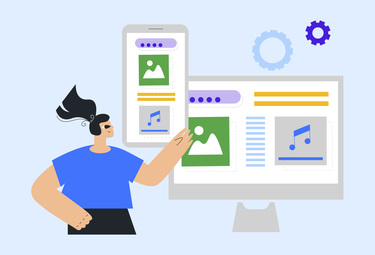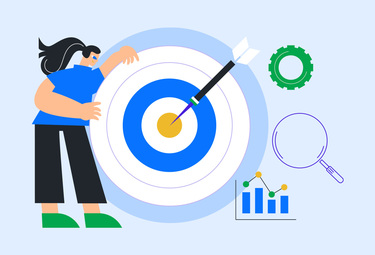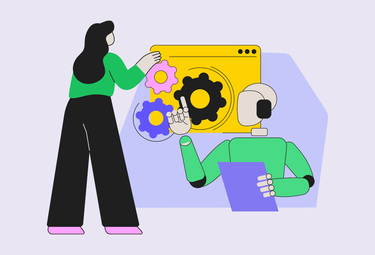Ever-evolving technology and Fear of Missing Out (FOMO) have made the smartphone an indispensable tool that many people never leave home without. Thus, not only is the number of users of mobile devices increasing, but also the demand for applications that decisively expand their functionality. Smartphones are no longer only used for communication, but also for a multitude of other functions, which are used by users with the help of applications - nowadays, entertainment and social applications (such as Facebook or Instagram) predominate. There is huge competition in the mobile app market, with new apps appearing almost constantly, which is why it is so important to take care of their development and improve the practical aspects.
Key principles of app design
A successful app combines three aspects - the market, the user and the product itself. An appropriately selected market segment, fed by the audience of a particular service to whom we want to target the product, influences the development of the app. Therefore, only when all these factors interact appropriately is it possible to ensure good usability, i.e. usefulness to users. When designing a mobile app, there are a number of principles to consider that are key to success - below is our subjective list of the most important ones.
- Competitor analysis - you should analyse the applications already existing on the market in order to be able to differentiate your product from others (especially in terms of design, functionality or usability). It is also worth looking at applications not necessarily related to the segment you want to target, in order to learn about innovative solutions that can be used in your product,
- Analysis of the target group - it is necessary to check what functions potential users require from the application in order to adjust the product to their interests - it must be tailored to users, taking into account their expectations,
- Simplicity first and foremost - for each view to be designed, there should be a maximum of one action to perform - the application should make it easy to perform a given action,
- Logical layout - the user interface should be well designed to make the application as easy to use as possible. Users are not fond of an excess of content and many graphics, so care should be taken to keep the app as simple as possible and to lay out the icons appropriately, and intuitiveness is best tested on yourself or a group of testers,
- Intuitive UX and UI - a well-designed User Experience and User Interface is one of the most important pillars of an app's success, as the right combination of these two scopes makes the product more intuitive for the user (find out more about UX and UI here: https://bit.ly/3WRR7tr),
- One-handed operation of the app - most smartphone users use one hand to control apps, which is worth considering when designing. Key elements should therefore be positioned in appropriate locations to take into account the range of finger reach and not require the user to use a second hand,
- The faster, the better - the speed of an app is one of the key elements affecting the user's experience when using it, so it is worth ensuring that it is responsive. It's also worth thinking about adding graphical elements to visualise progress (e.g. a loading bar or wheel) if the screen takes longer to load,
- A reasonable number of notifications - when designing the app, take into account the fact that users are not fond of too many notifications - if they receive too many, it may become a reason to uninstall the app. For this reason, consider introducing only the necessary notifications that do not burden the user with a lot of information,
- Resources required to run the app - the amount of memory required to install and run the app also affects the user experience - if the app will take up a lot of space and consume a lot of battery power, then the user may remove such an app to speed up their smartphone,
- Data security - don't forget practices to protect user data either - encrypting sensitive data or performing checks in accordance with OWASP recommendations (e.g. verification requirements for authentication or securing communications),
- Readable text - if text is an important element of the application, it must be presented in such a way that it is readable. Users should be able to read a given piece of text at a typical distance and without zooming in - too small a font size causes eye fatigue, and insufficient contrast makes the text blend into the background. It is therefore worth choosing a font that works well in a range of sizes and has sufficient colour contrast so that the text presented is legible and does not require the user to take extra steps,
- Feedback - when designing an application, it is worth paying attention to ensure that it responds to interactions made by the user. Feedback is provided in response to actions, so that the user can be sure that the action they have performed is correct. Depending on the type of application, developers can use different types of feedback, such as a loading indicator or highlighting an element when tapped,
- Further development - it is worth assuming from the initial stages of designing the app that the product will evolve, so it is best to select its elements right away so that the software can then be easily adapted to both Android and iOS, as well as to devices with different resolutions. In addition, any bug in the app should be fixed immediately so that users can benefit from its functionality without unnecessary problems.
When designing a mobile app, it is important to keep up to date with the latest trends and solutions - even if a feature was popular last month, it does not mean it will be next month as well. With the marketplace changing so rapidly, it is important to constantly think about how trends may be transforming so that you can plan for the further development of an app that meets the needs of your users. However, it is worth remembering that during the design process, it is not only the unique idea that is important, but also the right execution. It is also important not to forget to strike a balance between innovation and maintenance in order to provide users with the kind of app we ourselves would like to use.





